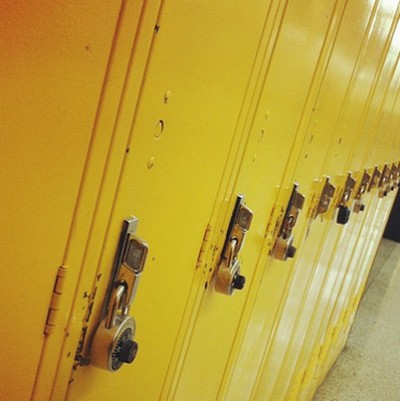Gov. Brown Supports Under-Served Students with New Legislation





 Email to a friend
Permalink
Email to a friend
Permalink
Tuesday, June 23, 2015
Zach Middleton, GoLocalPDX Contributor
On Tuesday, Governor Kate Brown signed into law several bills which will be known as the
Student Assessment Bill of Rights, a system of legislation aimed at assessing the needs of and improving outcomes for under served groups in the public education system.
Oregon currently has one of the lowest four-year high school graduation rates in the country. Many of the students who are unable to graduate within four years are minorities or come from low-income families.
“The audit of the opportunity gap in the Oregon K-12 education system completed while I was Secretary of State underscored the need for accurate data across all student subgroups to evaluate student outcomes and make improvements at the student and system levels,” said Governor Brown.
The Student Assessment Bill of Rights seeks to expand education opportunities for the youngest students by increasing Head Start and high-quality preschool program access. It will also fully fund all-day kindergarten for the first time in state history.
An investment of $12.5 million will be made in programs and assessments for English Language Learners. Governor Brown hopes other minority groups will be served by, “improving educational outcomes among African-American students… and targeting resources to improve attendance and retention rates among Native American students.”
More emphasis will be put on finding and developing high-quality teachers and administrators in Oregon schools with an emphasis on cultural competency, says the release.
The investment in science technology engineering and mathematics (STEM) and other “Career and Technical Education” programs will be nearly doubled across the state.
Governor Brown emphasized that student and parent participation in new programs and assessments is crucial for securing necessary federal funding. However, the language of the Student Assessment Bill of Rights puts the responsibility of communicating the importance of the programs and assessments to the parents of students on the schools themselves.
Related Slideshow: 10 Things To Know About the Portland School Transfer System

Prev
Next
#1
Why The Change
Portland Public Schools Superintendent Carole Smith asked SACET in March 2013 to recommend a new transfer policy, in order to improve district equity and quality.
After researching trends of transferring students and the effect on neighborhood schools, SACET felt the current policy was not living up to the standards of the Board. In a report to the Board in October, their research found racial disparity between schools and neighborhoods, in part due to transferring students.
By changing the policy, SACET said in their report they hope to improve the quality of schools and the resources available.
“All students should have access to a high quality and appropriate education close to their home,” the report said.

Prev
Next
#2
Who It Will Affect
Every year a few hundred students apply for the Portland Public School transfer lottery. In 2014, 425 students in grades K-8 entered the lottery, and 80 percent received the transfer they wanted. Now, petitions will be the only option for transferring neighborhood schools.

Prev
Next
#3
Anyone Can Transfer
All students in the Portland Public School District have the right to request a transfer, but now all transfers to neighborhood schools will be picked through a petition process.
Before, many transfers were granted through a lottery system that randomly selected students who applied within a timeframe. The number chosen depended on how much space was available at the school after those already in the neighborhood district were accounted for.

Prev
Next
#4
Petitions
A parent or guardian must fill out a petition form to the Enrollment and Transfer Center, explaining why they want the student to transfer into a different neighborhood school. Transportation hardships or concerns for child safety are some examples of viable reasons for a transfer.
The specific criteria of what will be considered when reviewing transfer petitions will be made available before the transfer cycle opens for the coming school year. The petition process follows the same guidelines as the earlier hardship petition policy.

Prev
Next
#5
Process for Approving Requests
Petition specialists with the Portland Public School District staff will review the petitions for each school, with three assigned to every application. The specialists then go over the request with the schools and the family to gather additional information and review the case.
Afterwards, the specialists will make their decision. The entire process could take several weeks.

Prev
Next
#6
Appeals
If parents are unhappy with the result of their petition request, they can appeal the decision to the senior cluster director who oversees the school they are trying to transfer to. The senior director’s ruling is final and should be given within 10 days.

Prev
Next
#7
Focus Option Schools
Focus option schools formerly known as magnate schools, specialize in enhanced programs such as art or environmental studies. These schools and programs will solely use the lottery process, since they are they are designed to attract students from all over the district.
However, siblings and low-income students will be given preference before the lottery winners are picked.

Prev
Next
#8
Sibling Preference
At focus option schools, siblings of currently enrolled students will have highest transfer priority before the lottery takes place, only behind students who are required by to attend a focus option program under district policy.

Prev
Next
#9
Low Income Students
Low-income students applying for a transfer to a focus option school will have a lower priority than a sibling requesting a transfer, but will have a higher preference than all other lottery entries. SACET’s research says this will help focus option schools become more diverse.
The policy defines low income students as someone who qualifies for free and reduced-priced meals or enrollment in a Head Start Program. The preference will apply in schools that have a lower enrollment rate of low-income students than the district average.

Prev
Next
#10
When It Starts
The changes to the new transfer policy will start for the 2015-2014 school year and the coming enrollment period.
For high school students, the transfer period is Feb. 4-18. Elementary and middle school students have from Feb. 9 –March 6 to submit transfer petitions.
Related Articles
Enjoy this post? Share it with others.





 Email to a friend
Permalink
Email to a friend
Permalink























Follow us on Pinterest Google + Facebook Twitter See It Read It